- When to Plant Corn in San Diego: Optimal Seasons and Tips - July 19, 2024
- When to Plant Hydrangeas in Illinois: Best Timing for Optimal Growth - July 19, 2024
- Why Are My Radishes Growing Above Ground: Uncovering the Causes - July 19, 2024
Learning how to add calcium to tomato plants is one of the most important things a gardener can learn to implement. You can simply use a calcium fertilizer, add lime or even use ground oyster shells, among others.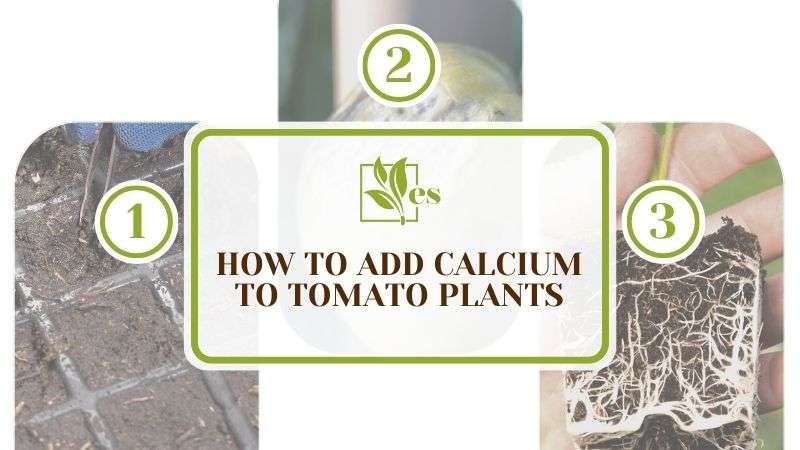
Calcium is one major nutrient that helps tomatoes do well by balancing the ions, extending their roots, stabilizing the fruit, and transporting nutrients throughout the tissues; it can also prevent blossom-end rot. This article will show you how you can do this like an expert.
JUMP TO TOPIC
How to Add Calcium to Tomato Plants in Different Ways?
To add calcium to tomato plants in different ways it’s essential to try different ways depending on the current state of your soil. Always start with a solid foundation of healthy soil, then supplement calcium from a commercial fertilizer, lime, bone meal, foliar spray, egg shells, wood ashes, or gypsum.
1. Use a Calcium Fertilizer
Commercial fertilizers for calcium are the best option if you have a deficiency problem. To know if you have a calcium problem, use a soil test to determine if it is deficient. Ensure the fertilizer will not increase calcium if the soil already has enough.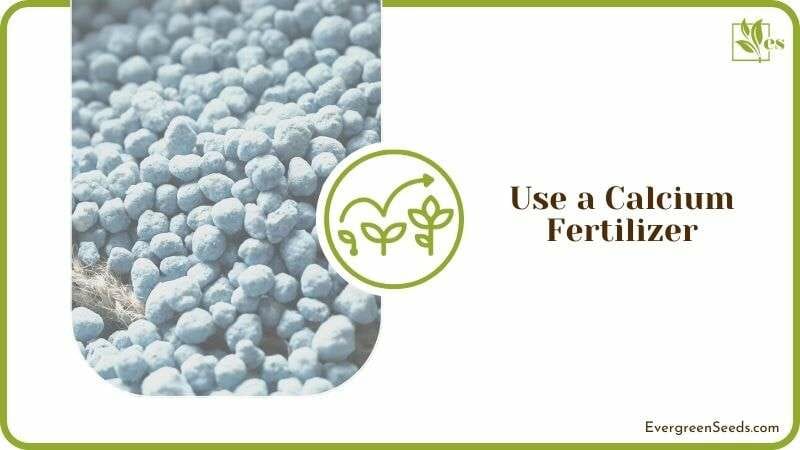
These fertilizers take time to work in the soil, giving your plants the longest-lasting nutrients. Add this fertilizer to the ground, mix it up, and then follow it with watering to help it absorb. These fertilizers may be in granular, liquid, or powder form. Use any that you deem fit for your plants. You can find these fertilizers in the garden stores around you.
2. Add Lime
Lime or calcium carbonate is an excellent source of calcium for your tomatoes. It is best added to the soil during planting to allow it to distribute well. Apply it in the fall for better absorption. Note that lime raises the soil’s pH, so you must know its level before adding it.
If your soil is too close to being neutral, avoid using it; lime is the perfect solution if it’s too acidic. A simple soil test will determine if you need to add or not. If your soil test shows there are low levels of magnesium and calcium, add a variation of dolomite lime that will significantly help you.
Lime is commonly found in farm stores and is made from crushed limestone. It comes in a powder easily incorporated powder form. There are plenty of lime choices, so you must make an informed choice when buying one.
3. Use Bone Meal
This meal is made up of ground animal bones. It is an excellent soil additive that raises the calcium levels in your soil. It works slowly, but surely, gradually increasing the calcium levels over the growing season.
Animal bones contain high levels of calcium, nitrogen, and phosphorus. It is a more balanced fertilizer, with many organic gardeners swearing by it. However, this fertilizer raises the pH of your soil and should not be used on alkaline soils.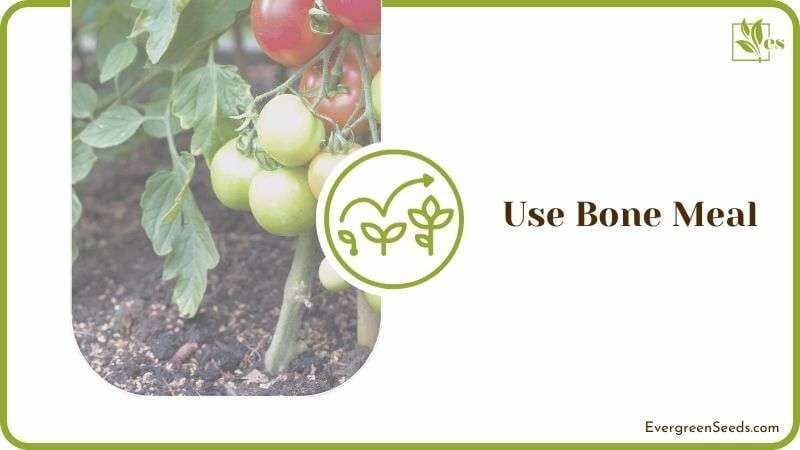
Thus it is best to add it at the beginning of the growing season, because it releases calcium in the soil for up to four months. Once you add it at the beginning, it will be enough for the entire season. This fertilizer is best for all plants, whether vegetables, flowering, root crops, etc. It is available in most garden stores, but you will need to choose from various options.
4. Use Foliar Spray
Foliar contains calcium chloride, calcium nitrate, and calcium acetate. You can supplement calcium via a spray which is quick acting and useful on plants. Spraying this fertilizer on plants helps them absorb the calcium directly.
Foliar is best used on your tomato plants when you know they lack calcium and require a fast way to save them. This spray is an excellent option because it puts the nutrients where the plant needs them most.
This fertilizer spray is the best as it prevents blossom-end rot because the calcium nutrient moves directly into the top of the plant, where blossoms tend to develop. This spray is also preferred as it does not affect the soil’s pH like other fertilizers.
Mix a solution of half to one ounce of foliar with one gallon of water. Put it in a spray bottle and add to your tomato leaves.
5. Use Eggshells
Eggshells are loaded with calcium that plants need. However, they break down slowly, which is why it is best added when planting. For the calcium to become available to the plant, it must be given time to break down.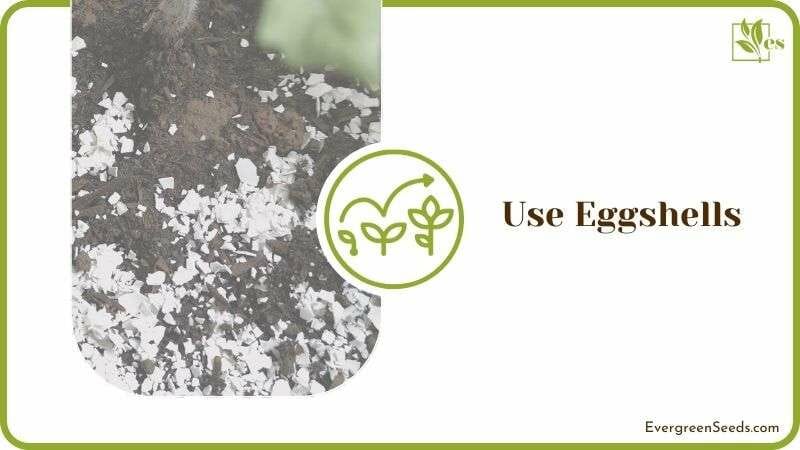
Add ground eggshells to the soil when planting or add them to the compost to break them down, then add the compost manure to the soil when ready. The shells will boost the manure’s calcium level, providing an excellent plant feed.
You can add ground shells to the hole where you plant tomato seedlings to prevent blossom-end rot. Grinding the egg shells helps with a faster breakdown so don’t leave them whole as they will not release the calcium as fast.
6. Sprinkle Wood Ashes
Sprinkle ashes from hardwoods as a calcium soil amendment and mix it for easier absorption. When added to the soil, ash provides calcium but raises your soil’s pH.
It has calcium carbonate that provides half the amount of calcium as lime. However, this kind of ash should be from hardwoods; softwoods ash is harmful to plants. Ash also contains boron, potassium, and phosphorus.
If your soil is more neutral than alkaline, do not use ash, as it will only increase the acidic levels. If you add ash as the plant grows, be sure not to touch its roots as it is caustic and will burn the plants. Make a ring around your plants, sprinkle the ash, and then cover it.
7. Add Gypsum
Gypsum is a form of calcium sulfate which is an excellent thing for adding to your soil. It is fast-acting calcium that breaks down and loosens the soil. Unlike other fertilizers in this guide, it does not alter the soil’s pH. If you don’t wish to bother your soil’s pH level, this fertilizer is for you.
Gypsum has many other benefits, including preventing water erosion, crusting of soil, and helping the young plant grow easily. It also removes the salt from the soil, which could cause problems for plant growth.
You’ll need this if you live in a coastal area with high salt content. You can purchase garden gypsum in most garden stores near you.
8. Use Ground Oyster Shells
Oyster shells are used as a supplement for laying hens, helping them produce eggs with stronger shells. You can use the same oyster shells to supplement calcium in your garden. It is similar to lime and adds calcium to your soil while increasing the pH range of the soil.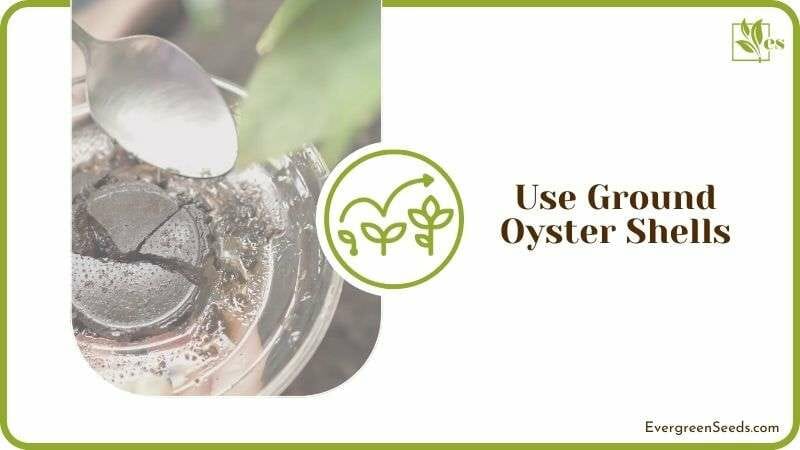
However, these shells increase the pH range slower than lime does, as they take years to break down completely. This may mean your plants will get the calcium needed after some time. But if you want a long-term source of calcium, it’s an excellent choice.
9. Add Colloidal Phosphate
Colloidal phosphate is a soft rock that is a source of calcium, also known as calcium oxide. It is friendly to the soil and does not tamper with the soil pH like other soil amendments.
This phosphate slowly releases calcium and contains large amounts of phosphorus too. You can choose to use hard or soft rock phosphate. Use the soft rock if you want to use it as fertilizer phosphate as it breaks down faster, and your plants can access the nutrients.
One caution about this fertilizer is that it is not recommended for soils with a higher pH range of 5.5, as it only breaks down in acidic soils. This fertilizer is quite affordable and a good source of calcium to try. Get it from the closest garden store.












